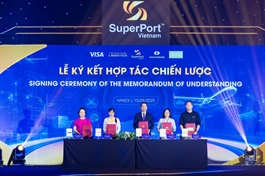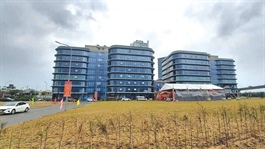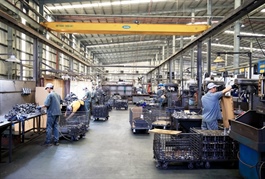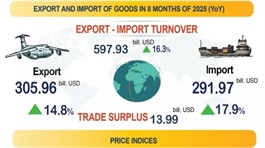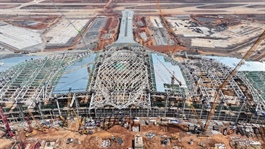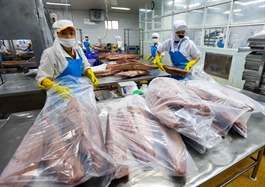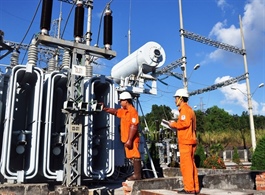Brands strategise to expand F&B portfolios
Brands strategise to expand F&B portfolios
The Vietnamese food and beverage industry is entering a strong structural regeneration cycle, where brand definition and customer experience management are becoming vital components for businesses to maintain an advantage.
Jollibee Foods Corporation, a food and beverage (F&B) player in the Philippines, announced its second-quarter financial report last week, with noteworthy business results for Highlands Coffee.
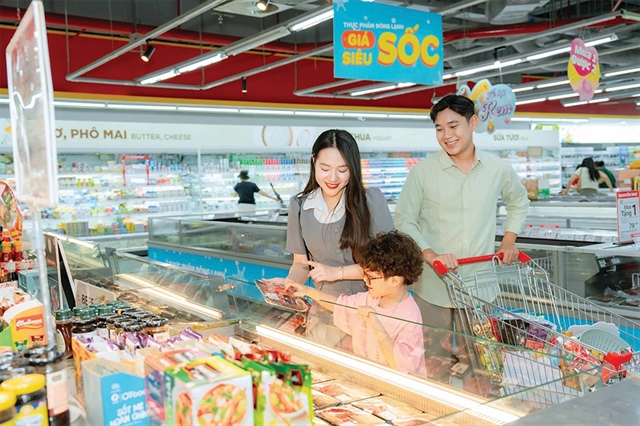
Consumers are increasingly being more selective, photo Le Toan |
Highlands Coffee’s earnings before interest, taxes, depreciation, and amortisation in the second quarter of 2025 reached more $22.4 million, up 5.8 per cent on the same period in 2024. This means the chain generated an average daily profit of more than $122,000, accounting for about 26 per cent of the group’s coffee and tea segment profits.
The acquisition of South Korean group Paris Baguette in April added colour to the diverse ecosystem of VTI Group, in which Jollibee is a strategic partner, alongside brands like Highlands Coffee, Pho 24, The Coffee Bean & Tea Leaf, Xu Restaurant & Lounge, and Quince Saigon.
Highlands Coffee is currently the largest coffee chain in Vietnam, with around 900 domestic stores and 50 franchise outlets in the Philippines.
In addition to expanding its points of sale, the chain has also invested heavily in production to strengthen its supply chain. In April, Highlands inaugurated a coffee roasting facility in Ho Chi Minh City with a total investment of $21 million, applying modern technology and targeting an annual capacity of 75,000 tonnes.
The brand is also considering the possibility of a public listing in Vietnam within the next 18–24 months.
Another Jollibee Foods brand, the fried chicken chain Jollibee, also maintained impressive growth in Vietnam. Globally, Jollibee’s total system sales increased by 15.4 per cent on-year, with Jollibee Vietnam leading with a 35 per cent increase. The financial report shows that although ranked third in terms of store numbers, the Vietnamese chain came first in terms of market share, revenue, and profit.
In addition, the first-half financial report of 2025 for Super Hi International, operator of the Haidilao hotpot chain, recorded international revenue of $396.7 million, up 7 per cent on-year. Vietnam remains one of the company’s four largest international markets, alongside Singapore, the US, and Malaysia, accounting for over 10 per cent of global revenue. In Vietnam alone, revenue in the first six months reached $43.6 million, up 1.6 per cent on-year.
Explaining the success of foreign F&B chains, Le Vu, managing partner at F&B Academy, emphasised that international brands succeed through three key factors: product quality, people, and environment. These chains focus on building spaces and service experiences that suit local culture, thereby creating long-term connections with customers.
“Consumers from Gen Z onwards are increasingly proactive in choosing products that fit their personal preferences, and the F&B market will naturally eliminate products and brands that do not meet these needs,” Vu said.
Vietnam’s F&B industry is expected to reach more than 331,000 stores by the end of 2025, a 2.6 per cent increase compared to 2024, according to iPOS.vn. Growth comes from both large chains and small retailers.
However, not all chains have seen positive results, with the contraction and withdrawal of once-popular brands. In the first half of 2025, Hot&Cold, one of the earliest milk tea chains, Comebuy from Taiwan, and Russia’s Dodo Pizza all closed their entire systems in Vietnam.
Meanwhile, larger brands such as The Coffee House and Starbucks also adjusted their networks, particularly in prime shopping mall locations. The Coffee House shut 48 stores, reducing its presence from 141 to 93 in the first half of the year.
At the same time, although continuing to open new stores, Starbucks Vietnam has shown innovation in its development strategy.
Starbucks currently operates 126 stores in 17 provinces and cities. Since the beginning of 2025, it has expanded strongly in the Mekong Delta, with opened new stores in My Tho, Long Xuyen, and soon Can Tho, Rach Gia, and Tan An.
A representative of Starbucks Vietnam said, “In addition to competing for prime locations in big cities, Starbucks has made efforts to localise its offerings with drinks familiar to Vietnamese tastes, such as iced milk coffee, salted coffee, and coconut coffee, while also expanding into tier-two localities.”
At the regional level, Source of Asia’s Southeast Asia F&B Industry Report 2024–2025 forecasts that the size of the region’s F&B industry will reach $900 billion by 2028, with food and beverage services alone rising from $192.4 billion in 2024 to $349 billion in 2029.
- 11:11 16/09/2025



